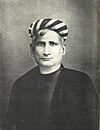
Bankim Chandra Chattopadhyay was an Indian novelist, poet, essayist and journalist. He was the author of the 1882 Bengali language novel Anandamath, which is one of the landmarks of modern Bengali and Indian literature. He was the composer of Vande Mataram, written in highly Sanskritised Bengali, personifying India as a mother goddess and inspiring activists during the Indian Independence Movement. Chattopadhayay wrote fourteen novels and many serious, serio-comic, satirical, scientific and critical treatises in Bengali. He is known as Sahitya Samrat in Bengali.

The Pashchimbanga Bangla Akademi is the official regulatory body of the Bengali language in West Bengal, India. It was founded on 20 May 1986 in Kolkata to act as the official authority of the language and is entrusted with the responsibility of reforming Bengali spelling and grammar, compiling dictionaries, encyclopedias and terminologies and promoting Bengali language and culture in West Bengal. Though the Akademi has no enforcement power over their rules and regulations, they are widely accepted by the Governments of West Bengal and Tripura as well as a considerable number of private publishing houses and institutions such as the Oxford University Press and the Ramakrishna Mission.
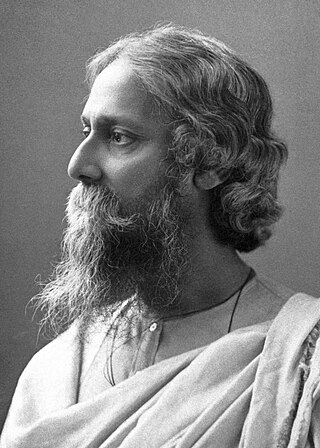
Bengali literature denotes the body of writings in the Bengali language and which covers Old Bengali, Middle- Bengali and Modern Bengali with the changes through the passage of time and dynastic patronization or non-patronization. Bengali has developed over the course of roughly 1,300 years. If the emergence of the Bengali literature supposes to date back to roughly 650 AD, the development of Bengali literature claims to be 1600 years old. The earliest extant work in Bengali literature is the Charyapada, a collection of Buddhist mystic songs in Old Bengali dating back to the 10th and 11th centuries. The timeline of Bengali literature is divided into three periods: ancient (650–1200), medieval (1200–1800) and modern. Medieval Bengali literature consists of various poetic genres, including Hindu religious scriptures, Islamic epics, Vaishnava texts, translations of Arabic, Persian and Sanskrit texts, and secular texts by Muslim poets. Novels were introduced in the mid-19th century. Nobel laureate Rabindranath Tagore is the best known figure of Bengali literature to the world. Kazi Nazrul Islam, notable for his activism and anti-British literature, was described as the Rebel Poet and is now recognised as the National poet of Bangladesh.

The culture of West Bengal is an Indian culture which has its roots in Bengali literature, music, fine arts, drama and cinema. Different geographic regions of West Bengal have subtle as well as more pronounced variations between each other, with Darjeeling Himalayan hill region and Duars showing particularly different socio-cultural aspects.
The Tagore family has been one of the leading families of Kolkata, India, and is regarded as one of the key influencers during the Bengali Renaissance. The family has produced several people who have contributed substantially in the fields of business, social and religious reformation, literature, art, politics and music.
The Ananda Puraskar is an award for Bengali literature awarded annually by the ABP Group to writers using Bengali, usually from West Bengal, India.

Sukanta Chaudhuri is an Indian literary scholar, now Professor Emeritus at Jadavpur University, Kolkata. He was educated at Presidency College, Kolkata and the University of Oxford. He taught at Presidency College from January 1973 to December 1991 and at Jadavpur University thereafter till his retirement in June 2010. At Jadavpur, he was founding Director of the School of Cultural Texts and Records, a pioneering centre of digital humanities in India. His chief fields of study are the English and European Renaissance, translation, textual studies and digital humanities. He has held visiting appointments at many places including All Souls College, Oxford; St John's College, Cambridge; the School of Advanced Study, London; University of Alberta, University of Virginia; and Loyola University, Chicago. He is an Honorary Fellow of the Asiatic Society, Kolkata and a member of the Executive Committee of the International Shakespeare Association. In July 2021, he was elected a Corresponding Fellow of the British Academy.

Satish Chandra Mukherjee was a pioneer in establishing a system of national education in India, along with Sri Aurobindo.

Hara Prasad Shastri, also known as Hara Prasad Bhattacharya, was an Indian academic, Sanskrit scholar, archivist, and historian of Bengali literature. He is most known for discovering the Charyapada, the earliest known examples of Bengali literature.
Brajabuli is an artificial literary language popularized by the Maithili poet Vidyapati. His Brajabuli lyrics about the love for Radha Krishna is considered to his best of works. Other poets emulated his writing, and the language became established in the 16th century. Among the medieval Bengali poets who wrote in Brajabuli are Narottama Dasa, Balarama Das, Jnanadas, and Gobindadas Kabiraj.
Bharata Bhagya Bidhata is a five-stanza Brahmo hymn in Bengali. It was composed and scored by Nobel laureate Rabindranath Tagore in 1913. The first stanza of the song has been adopted as the National Anthem of India.

Vālmīki-Pratibhā is an opera by Rabindranath Tagore. The Bengali libretto was written by Tagore himself based on the legend of Ratnakara the Thug who later became Sage Valmiki and composed Ramayana, a Hindu epic.

Adhar Lal Sen was a householder disciple of Ramakrishna, the 19th century mystic saint from Bengal, and had a prominent place amongst the early devotees of Sri Ramakrishna. He had an extraordinary academic record. He lived in Beniatola street of Calcutta and graduated from Presidency College. He was a deputy magistrate by profession and also a member of the faculty of Calcutta University. He was also an accomplished poet in Bengali language. He died very young, before age thirty.
Bankim Puraskar is the highest award given by the Government of West Bengal for contribution to Bengali fiction. The award was instituted in 1975 in memory of Bankim Chandra Chattopadhyay, a famous Bengali novelist of the 19th century. It has been brought under the aegis of Paschimbanga Bangla Akademi, functioning under the Department of Information & Cultural Affairs, in 2003. The award is handed over by the Chief Minister of West Bengal.
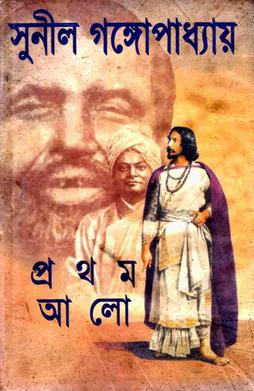
First Light is a historical novel by Sunil Gangopadhyay, centering on historical figures like Rabindranath Tagore, Swami Vivekananda, Ramakrishna, Bankim Chandra Chattopadhyay, Ishwar Chandra Vidyasagar, George Curzon. It is set in India during the second half of the nineteenth century of Indian history, focusing on the Bengal Renaissance.
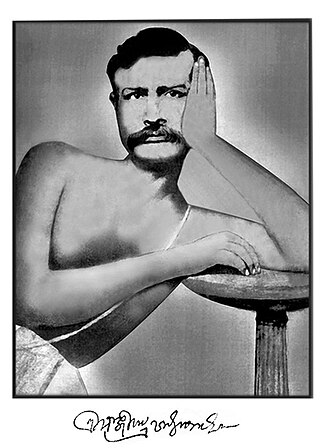
Sanjib Chandra Chattopadhyay was a Bengali writer, poet and journalist. He was the elder brother of Bankim Chandra Chattopadhyay.
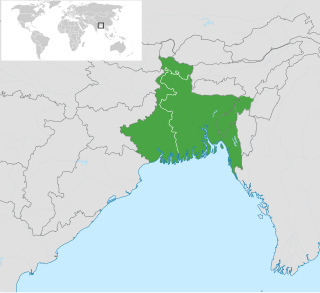
Baṅgamātā, Bangla Maa, Mother Bengal or simply বাংলা/ Bangla, is a personification of Bengal created during the Bengali Renaissance and later adopted by the Bengali nationalists. In Bangladeshi Bengali and Indian Bengali poetry, literature, cultural and patriotic song, she has become a symbol of Bangladesh and India's West Bengal & Tripura and considered as a personification of the People's Republic of Bangladesh. The Mother Bengal represents not only biological motherness but its attributed characteristics as well – protection, never ending love, consolation, care, the beginning and the end of life.

Swarnakumari Devi, also known as Swarnakumari Tagore, Swarnakumari Ghosal, Svarṇakumārī Debī and Srimati Svarna Kumari Devi, was an Indian Bengali writer, editor, essayist, poet, novelist, playwright, composer, and social worker.













